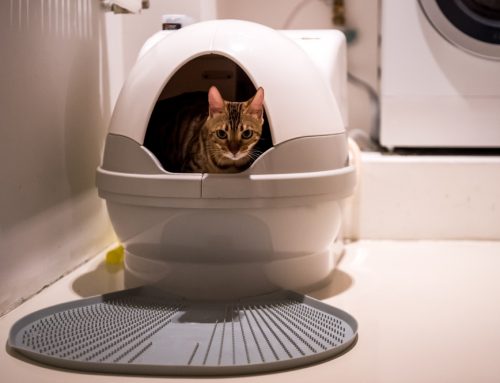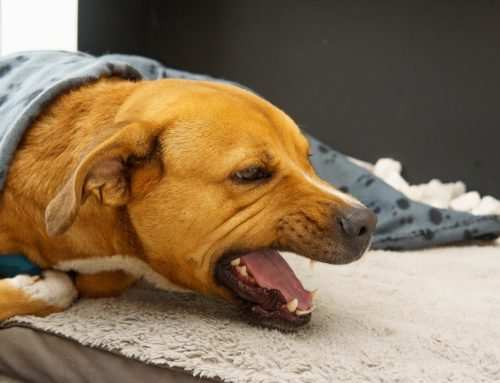As temperatures rise this summer, pet heatstroke risks do the same. Characterized by an inability to cool down, heatstroke is a life-threatening condition that can affect pets during hot weather. Recognizing the signs and knowing what to do if you suspect your pet has heatstroke can save their life. Our West Vets Emergency Veterinary Clinic team shares what you need to know about protecting your furry pal from heatstroke.
What is heatstroke in pets?
Heatstroke occurs when a pet’s body temperature rises higher than 104 degrees for a sustained period, quickly leading to cell and organ damage, brain swelling, blood clotting problems, or death. Unlike people, pets’ bodies do not cool themselves by sweating. A pet’s body dissipates heat through gas exchange in their respiratory system and sweat only a small amount from their feet. These cooling mechanisms can easily become overwhelmed in high heat, especially when combined with high humidity.
Heatstroke risk factors in pets
Each pet has their own heat tolerance and potential heatstroke risk factors. Your pet’s heatstroke risk depends on the following:
- Weather — Prolonged exposure to heat or humidity can overwhelm a pet’s ability to cool down.
- Environment — Pets left outdoors without shade or water have a high heatstroke risk.
- Exercise — Vigorous activity in hot weather, especially if your pet is out of shape or overweight, can lead to heatstroke.
- Enclosed spaces — Pets left in parked cars, which act like ovens in hot weather, can develop heatstroke within only a few minutes.
- Breed — Brachycephalic (i.e., short-nosed) breeds, such as bulldogs or pugs, are susceptible to heatstroke because they often have narrow airways that make heat exchange difficult.
- Age — Senior pets, puppies, or kittens have difficulty regulating their body temperature.
- Health — Overweight pets and those with underlying health conditions, such as thyroid disease, heart disease, or structural airway compromise, are more likely to suffer from heatstroke than healthy pets.
Heatstroke signs in pets
Recognizing heatstroke signs early and immediately addressing them can save your pet’s life. Signs to watch for include:
- Excessive panting
- Drooling
- Red or pale gums
- Weakness or incoordination
- Vomiting or diarrhea with or without blood
- Confusion or disorientation
- Collapse or seizures
- Bleeding or bruising
What to do if you suspect your pet has heatstroke
Take action right away If you suspect your pet has heatstroke. The longer your pet’s temperature is elevated, the less likely they are to recover. Our team recommends initiating cooling measures while en route to our emergency veterinary facility. Take these steps to cool your pet safely:
- Move to a shaded or air-conditioned area, ideally a vehicle in which to transport your pet to our facility.
- If your pet is conscious, offer them small amounts of cool water to drink but do not force them to drink.
- Pour cool water over your pet to gently lower their temperature. Do not use ice-cold water because it can worsen your pet’s condition.
- Place your pet near a fan or air-conditioner vent.
Emergency pet heatstroke treatments
When you and your pet arrive at our clinic, our team will continue lowering your pet’s temperature in a controlled manner and begin treatments to counteract heatstroke’s effects. Common treatments include intravenous (IV) fluids, oxygen therapy, medications, blood transfusion, and intensive monitoring. Heatstroke effects are sometimes delayed, so your pet will likely need to spend several days in the hospital to ensure complete recovery before discharge.
Preventing heatstroke in pets

Heatstroke is deadly in 19% to 49% of pets, which means prevention is the best strategy to keep your furry pal safe. Follow these tips during hot weather:
- Provide cool water and shade for your pet at all times.
- Limit outdoor exercise to the early morning and late evening hours.
- Never leave your pet unattended in a parked car or outdoors.
- Keep high-risk pets indoors whenever possible.
- Use cooling vests, cooling mats, fans, and swimming pools to facilitate a comfortable time outdoors.
Don’t let heatstroke ruin your summer or take your pet’s life. Practice good heat safety and ensure your pet stays in the shade and remains hydrated. Contact our West Vets Emergency Veterinary Clinic team for assistance if your pet develops heatstroke signs or another illness that requires urgent or emergency care.







Leave A Comment